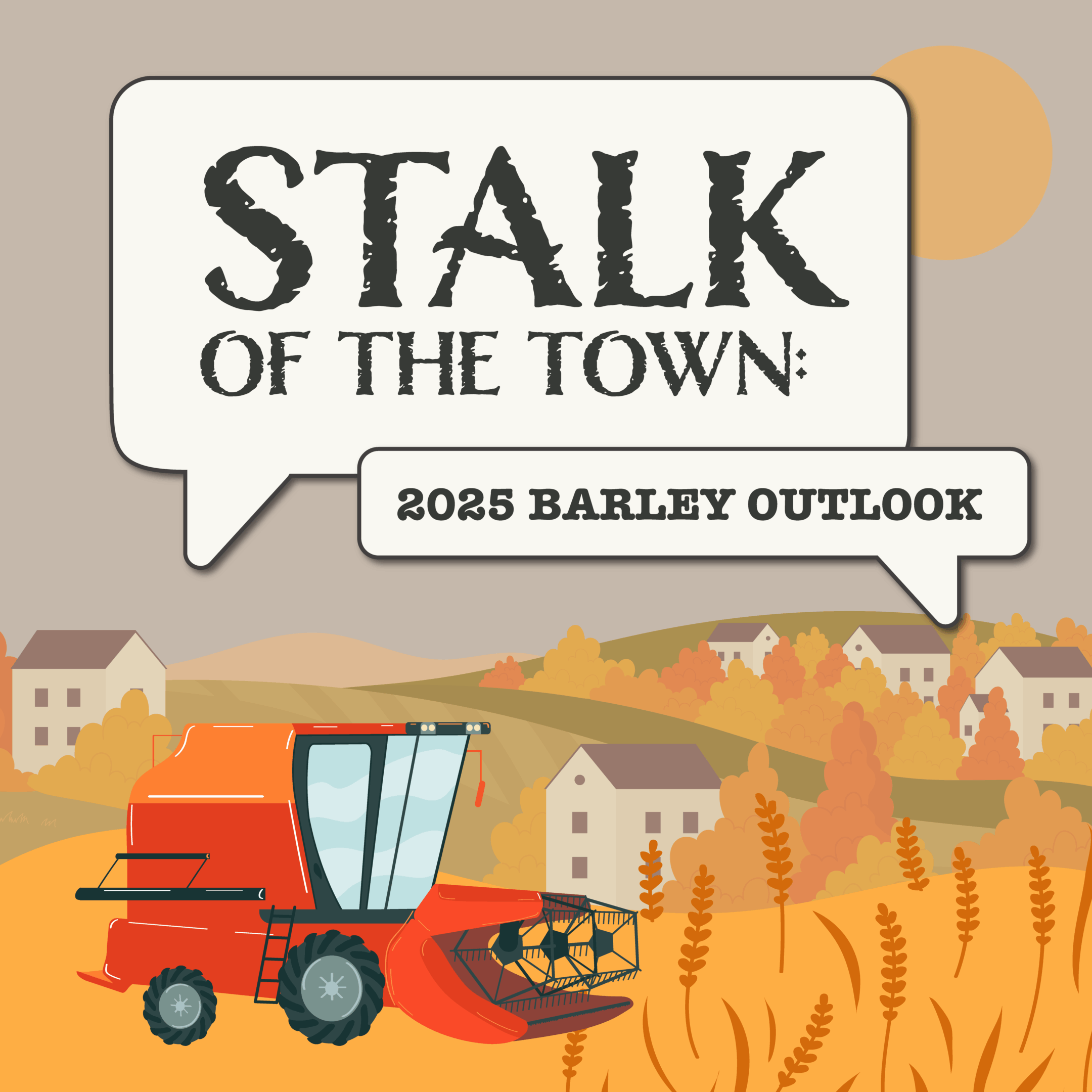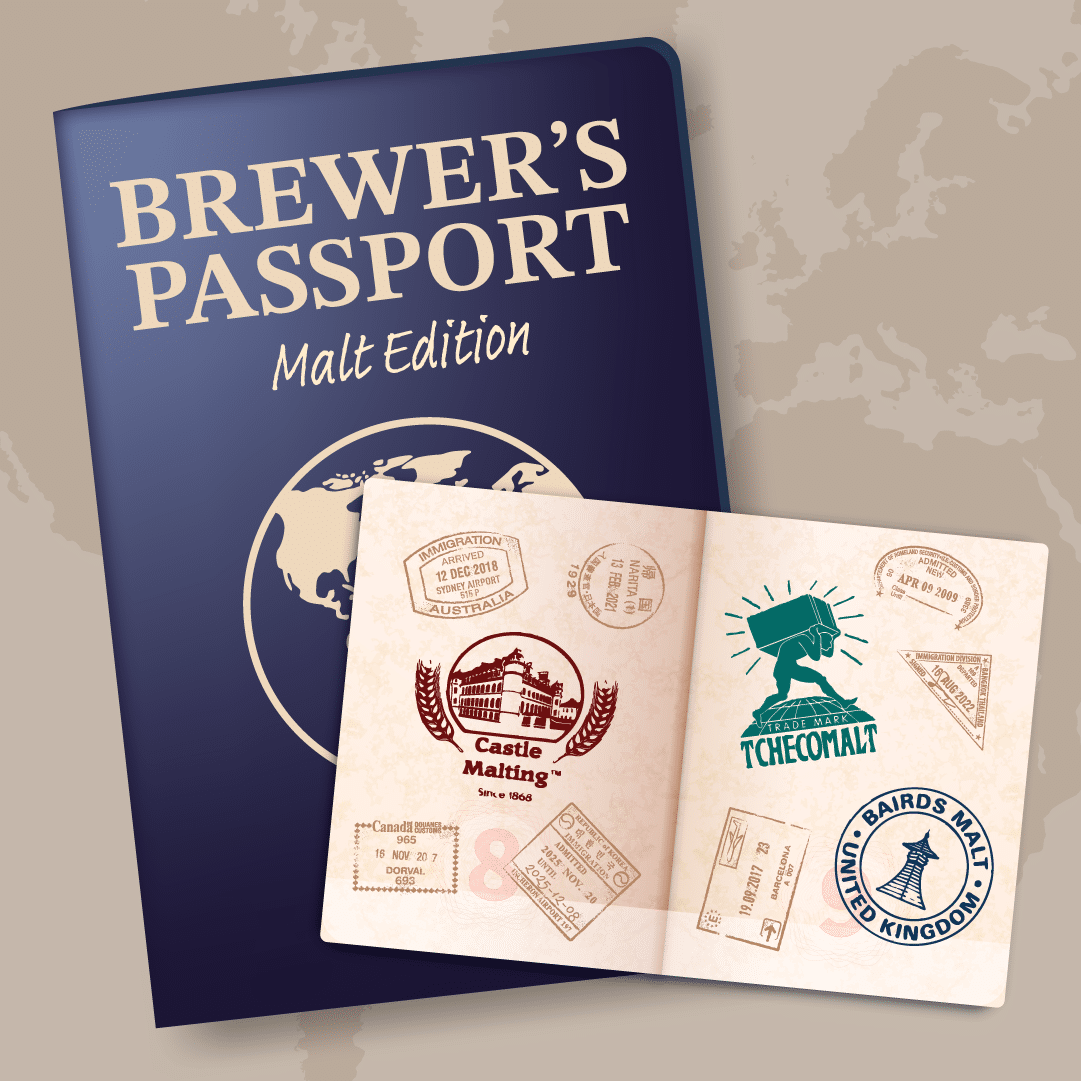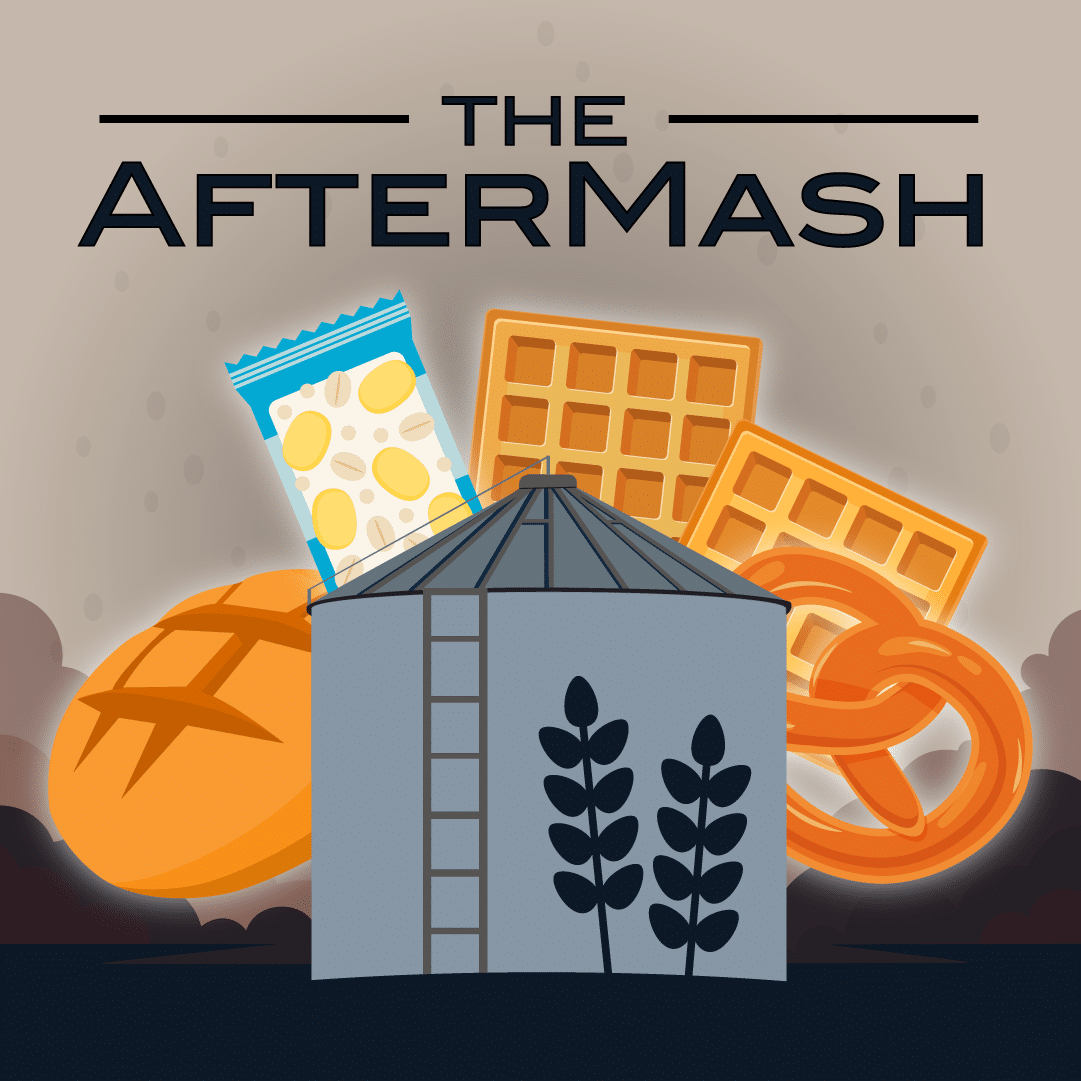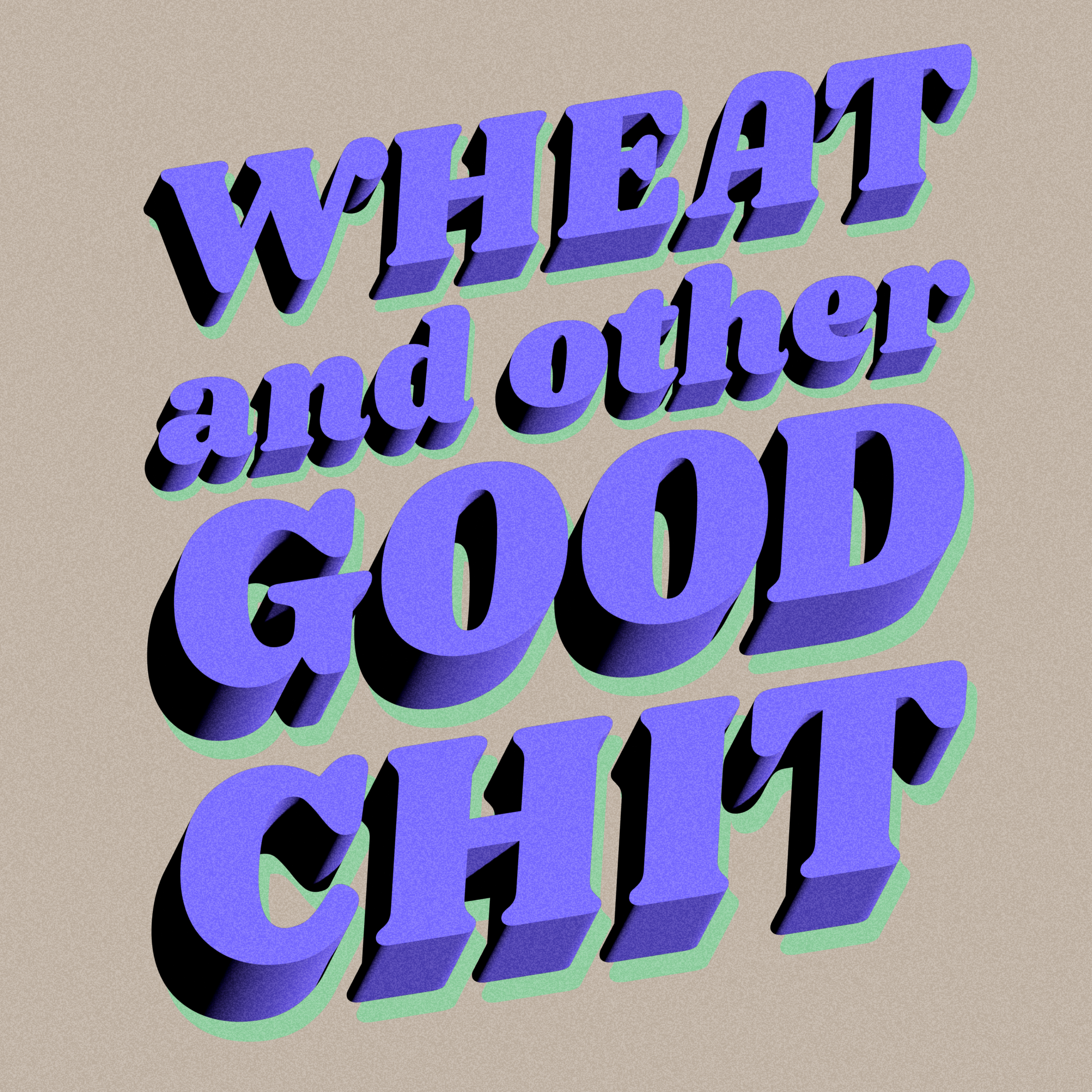
PODCAST GUESTS
Geoff Fischer

Scott Garden
Scott Garden is the Director of Quality and Technical Services for Great Western Malting. Based in Vancouver, WA, Scott oversees quality assurance laboratories. He is also responsible for the company’s research and development efforts which include the malting, brewing, distilling and sensory activities of the Malt Innovation Center.
With over 25 years of industry experience, Scott has developed an extensive and varied technical background. Prior to coming to Great Western Malting, he was Vice President of Technical and Innovations for John I. Haas, Inc. where he was responsible for quality and research initiatives for hops and brewing.
Scott’s academic background includes a Ph.D. in Food Chemistry from the University of Alberta in Edmonton, Canada, and an M.B.A. from the University of Washington in Seattle, WA.
Graham Manson
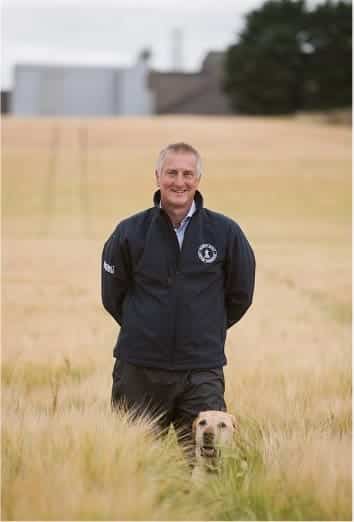
A chemical engineer by training, he has undertaken roles in production, research, engineering, maintenance and general management. Well-versed in the operational needs of both malt and grain distillers, Graham supports producers in Scotland as Bairds Malt’s Commercial Sales Manager.
In this latest role, Graham travels the country monitoring customers’ requirements, assisting new start-ups with their malt supply chain set-ups, and troubleshooting processing issues referencing his knowledge and experience. As in the photo, he is often accompanied on his travels by Monty the dog who is well used to distilleries having been the unofficial dog mascot at both Highland Park Distillery and Glenfiddich.
MORE EPISODES
SEASON 4, EPISODE 19: HOW LOW (GN) CAN YOU GO?
PODCAST HOSTS:
HEATHER JERRED – TERRITORY MANAGER, COUNTRY MALT GROUP
GEOFF FISCHER – TERRITORY MANAGER, COUNTRY MALT GROUP
GUESTS:
SCOTT GARDEN – DIRECTOR OF QUALITY AND TECHNICAL SERVICES, GREAT WESTERN MALTING
GRAHAM MANSON – COMMERCIAL SALES MANAGER, BAIRDS MALT
Key Points From This Episode:
- What is Low GN malt?
- Why is there a need for Low GN malt?
- Which barley varieties are best used for Low GN malt?
- What’s the difference between UK and North American Low GN malts?
- Why is Low GN malt important to distillers?
Transcript - How Low (GN) Can You Go?
EPISODE S.4, E.19
[HOW LOW (GN) CAN YOU GO?]
Heather (00:09):
Welcome back to another episode of The BrewDeck Podcast. I am your host, Heather Jerred, and in case you missed it, August is actually our anniversary month on The BrewDeck Podcast. We started this podcast back in 2020, and even though it is called The BrewDeck, we’re very proud to make episodes for brewers and distillers alike. In fact, our very first episode three years ago was actually dedicated to American whiskey. So, today’s episode is going to be about low GN malts for distillers, and that I’m very excited to be joined by CMG’s resident distilling expert Geoff Fischer. If you have been listening for a while, I’m sure that name actually does sound very familiar. Geoff has helped co-host many of our distilling episodes, but this is actually a coming full circle for our anniversary celebration moment because he was our very first guest on season one, episode one. So without further ado, let’s get this party started.
(01:02)
I am now joined by my very special co-host for the day Country Malt Group territory manager Geoff Fischer. Welcome back to The BrewDeck, Geoff.
Geoff (01:11):
Hey, thank you very much, Heather. It’s kind of exciting to be back on. I have not been able to participate or been part of one for a while, so I’m very excited to be here.
Heather (01:20):
Well, when we’re talking distilling, we always have to bring Geoff in because he is our resident distilling expert. So, thank you so much for joining me today. We’re going to be talking low GN malts today. Can you just tell us a little bit about why this topic is important?
Geoff (01:36):
So the importance of this topic, obviously as it applies to distilleries, is low GN malts, and then through the process ethyl carbamate production in distilled spirits is something that’s fairly heavily regulated outside of the United States, primarily UK, Europe, Canada, they regulate the amounts in the final distilled spirits. You need to have malts, low to no glycosidic nitrile production to make a final spirit that’s low in ethyl carbamate to meet certain specifications that our colleagues here can talk about. With the advent and hopefully codification of the regulations around American single malt whiskey, the idea of a low to non-GN producing malt as a base is becoming an ever-increasing topic with our customers as potential regulations here in the US and/or if they want to sell whiskey abroad. So, we’ve assembled some experts today to discuss this topic with us in detail.
Heather (02:59):
Yeah, we are very lucky to be joined today by, speaking of UK, Graham Manson, commercial sales manager for Bairds Malting. Welcome, Graham.
Graham (03:08):
Hello. Good evening, welcome.
Heather (03:10):
Yes, it is good evening for you. Good morning for us.
Graham (03:13):
Good morning, of course. Glad to be there. Thanks for inviting me along to this interesting chat.
Heather (03:18):
We’re also joined by Scott Garden, director of quality and technical services for Great Western Malting. Welcome, Scott.
Scott (03:26):
Thank you, great to be here this morning.
Heather (03:28):
Before we dive into the topic at hand, Graham, let’s start with you. Can you give us a little bit about your background and how you ended up at Bairds?
Graham (03:38):
Sure, I’ll make it brief. I started in whiskey in 1985, working for numerous of the scotch whiskey companies. I did that right up until the end of 2020 with through COVID and all of those horrible times that we had to deal with, and I thought I would retire, but Bairds picked up the phone and said, “Do you want to do a little bit of sales work for us?” And that’s been me since January ’21, helping the UK sales for the Bairds team.
Heather (04:13):
Awesome, and Scott, tell us a little bit about yourself and how we got you a Great Western Malting.
Scott (04:21):
Sure, I’m actually Canadian, born and raised in Alberta originally.
Heather (04:23):
Yay.
Scott (04:28):
I went to school at University of Alberta. My first job was many years ago, back in the ’90s was with Canada Malting. I started back that plant in Calgary with them. About 2000, moved down to the United States, started working for a hop company down here, worked for them for 16 years, and then came back to the group here under Great Western, which is in Vancouver, Washington, and I’ve been here for seven, going on eight years now in this area. So glad to be back in malt, enjoyed my time in hops and really like this industry. I think the beer, brewing, malting industry is a really great industry to be a part of, and we are adding in distilling to our portfolio, which is a great product as well, so all good.
Heather (05:14):
Awesome. Well, Graham, I’m going to throw it to you. When we were talking last week, I realized you are just the absolute perfect person to come have on the podcast because of your experience and your background in dealing with low GN malts. So, can you give us a little bit of the history of these malts, kind of how this came about and the research that was put into it?
Graham (05:39):
Yes, I’ll do my very best. I’ll just caveat this with a sort of warning that this is my personal recollection of it all. I don’t profess to have an encyclopedic knowledge of dates and times, but I’ll give you my take on it right from when it first started, in my perception certainly. In 1988, ’89, I moved to what was called United Distillers Research Station. It is now called Diageo Company, and that was right about the time that the first Canadian studies into ethyl carbamate’s effect on organisms became sort of proven and became an issue the industry had to take notice of.
(06:38)
It was quite an interesting development for a young chemical engineer like me to get involved with a multidiscipline team of dozens of scientists using mass spectroscopy and gas chromatography to analyze these compounds, things that I knew very little about. But what I think became quite clear was that EC, ethyl carbamate, I’ll use these terms interchangeably throughout this preamble, was not volatile. You couldn’t distill it into spirits. It wouldn’t distill over a distillation column, it wouldn’t distill over a `hot still.
(07:21)
So, it had to have come from some sort of precursor element that was then subsequently forming EC in the spirits. So, that led the research team to look at how the distilleries worked, fermentation, mashing, the role of copper. All of those interesting things were being studied by the team. However, and this is a very quick quality history of it, the real breakthrough came when the team who had the micro maltings facility at the research station, Bob Cook and [inaudible 00:07:59] Mackay’s team, they began to see that these precursors that were creating ethyl carbamate started all the way back at the malt, in the corn of the malt, in the kernel of the malt, particularly concentrated in the acrospire growth.
(08:16)
And then through their work, they were able to actually start to identify that certain strains of barley had less potential for these precursors, and that led, I suppose, to the eventual realization that the way to really properly control this was through plant breeding and focusing on those varieties that had the potential for low precursor. This precursor, we now generally call it as the EPH. I’m not going to even try to say the name, but that’s the precursor. It comes from the GN characteristic of the variety in the first place. That’s my sort of very much [inaudible 00:09:01] history from a personal perspective being a very small cog in a very large team that what’s now called Diageo used to identify the source of the problem. To be fair, it wasn’t just Diageo’s team. There were multiple teams across Scotland, including the umbrella organization, the Scotch Whisky Association, coordinating all these research efforts into identifying the source.
Heather (09:29):
So, can you give us a quick breakdown on the precursor itself comes from the barley, and then when during the distilling process does this really become an issue?
Graham (09:40):
Potential, the precursor is… Let’s assume you’re rolling the clock back 20 years and where you have a malted barley that has the potential to produce the precursor. First of all, a maltster can ratchet up that the amount of precursor by the germination regime. So, there is some things you can do in malting to reduce that, that doesn’t necessarily help the distiller with his yield. And then within the distillery, there’s a couple of factors that Diageo went strongly on. One of them was the copper, the amount of copper or the quality of the copper that’s used in the distillation apparatus.
(10:29)
So, my little part of it all was as a chemical engineer, I was trying to understand the mechanism by which copper was solubilized into the still or into the column depending on what type of spirit you were producing, and we found a correlation between how much copper could be solubilized and the impact of the precursor, more copper, less precursor, so less EC in your spirit, lessen [inaudible 00:11:06] resulted from that. So corporate content was one of the things that we were really keen on in United Distillers, or Diageo at the time.
Heather (11:14):
I got you, and again, can you tell us around what year this kind of became a big thing that was being researched in the UK?
Graham (11:20):
Of course, so that’s sort of my recollection of it, and again, I’ll put [inaudible 00:11:25] out there saying I’ve not got encyclopedic knowledge, but I knew I was working on this on ’88, ’89 and ’90, and I think the consensus within the administration was reached in those early ’90s that it would be barley varietal led that would solve the problem, and that sounds like a long time ago, but I guess if you think about it, it takes about 10 years for a plant breeder to put forward a-
Heather (11:55):
A new variety.
Graham (11:57):
A new variety for approval. So, I guess that would be the realization at that point in time that we had to manage the problem by other means until such times as the low stroke, no GN varieties that became more widely available. I’m not sure if that chimes with your North American sort of… Certain with the Canadian take on it, Scott, but that’s my sort of recollection of how the timeframes worked for this.
Scott (12:26):
It was initially, I think back in the ’80s recognized glycosidic nitrile leading to the formation of ethyl carbamate. That process that you were talking about, Graham, was identified. And then of course, as you say, you need to start finding barley varieties that do not have this characteristic at that point. And so, this whole process does take a few years in order to develop it, and I think the UK has been involved with this in a while, and a lot of varieties that we now call non-GN or non-glycosidic nitrile producing have come out of the UK here.
(13:07)
And it is a series of reactions. Epiheterodendrin is a primary glycosidic nitrile that leads to ethyl carbamate, but there’s a series of reactions that happen during processing to end up at that end point. So, it is a pretty interesting and complex process here within and amazing to think, trying to figure this out many, many years ago, but glad they have and we moved forward and I think we’re in a good position going forward here in our understanding and control of basically ethyl carbamate through the development of what we call low or non-GN varieties, and these are varieties that don’t produce epiheterodendrin as a precursor to ethyl carbamate.
Geoff (14:00):
Hey, Scott or Graham, just without getting too deep into varieties, we know varieties change, maltsters… What farmers are growing based on agronomic needs in their areas and what’s working best, but just talk about UK varieties, Scott, where that’s a lot of these low GN malts come from. Is that, for example, what we’re malting here in the US, is it originally from a UK barley variety?
Scott (14:33):
Yes, in the US currently we’ve adopted a variety called Odyssey, which is a UK proven variety. I’ll call it a dual use variety, good for distilling, good for brewers as well, so great characteristics in this variety. It doesn’t have the glycosidic nitrile. It’s what we call a null variety. It doesn’t produce epiheterodendrin, so you don’t get the propensity to produce that ethyl carbamate during distilling. So, I will say though that there’s been a lot of activity. Since I’ve returned to malting about seven, eight years ago in this area, in the US and Canada, and varieties being developed domestically here that do have what we call the low, non-GN potential here, so a lot going on. I would say that some of the UK varieties are still very good varieties that we look at as well, but again, an interesting area with lots going on here with it.
Geoff (15:36):
And Graham, just kind of on a similar topic, you were talking about when the UK, they had started looking at EC production through GN in the malt, does that apply… Older varieties like Golden Promise would be GN producers where maybe a new variety Laureate would not be? Would that kind of sum that up, the age of the variety?
Graham (16:08):
Absolutely, Geoff, those older varieties that were king of the Hill when I started in the late ’80s, they all had that potential in them, and again, that’s why you see those guys have really dropped off the radar. They’re very much now regarded as niche products because they have that inherent potential within them to produce a spirit that may have EC. So I recall, I recall Macallan moving away from that when I worked there and they’ve gone through two or three iterations, and I think now their sort of niche malt is definitely a non-GN producing malt, so things change. The whiskey industry is quite conservative with the small C, but with the way the industry works, you can’t really have stock in the warehouse that has the potential to be excluded from a market. So there has to be, I suppose, a filling of the pipeline of new material, new stock that is risk-free from this point of view, so many, many of the customers have moved over to these non-GN or low GN malts.
(17:27)
And just to back up what Scott was saying, really now it’s quite tight in the UK, all of basically The Maltsters’ Association of Great Britain, which is the sort of umbrella body for growing in the UK, basically says that all distilling has to have this characteristic of non-GN. New varieties coming through to get approved, have to be non-GN, and that’s just it. So, it’s a non-starter to bring anything through that has the potential.
Heather (17:58):
So, what specific malt in the Bairds portfolio would you most recommend for distillers?
Graham (18:05):
Oh, goodness. There are three approved varieties for malt distilling, the Laureate, Diablo, and Sassy, they come from different seed manufacturers, so they have some different characteristics. Even in a small country like Scotland, it’s quite difficult to actually say what’s best. Generally speaking, Laureate grows well across the geography of the country, and Sassy and Diablo have some geographical, I suppose, preference for where they’re growing. Some are slightly earlier ripening, slightly earlier maturing, shall we say, and so if you’re in the north of Scotland and you maybe have slightly cooler climate, you might go for Sassy.
(19:13)
If you are in the more southern, I hate to say temperate parts of Scotland, but slightly less vile climate, you may grow Diablo in the sort of southern part of Scotland. This would only be on a basis of getting the right nitrogen for the distiller. I suppose my answer is drifting into what’s good for the farmer, what’s good for the maltster, rather than what’s good for the distiller because ultimately distillers tend to really ask us not a variety specific specification, but more a PSY. What efficiency am I going to get to my distillery if I use your malt? So, we would strive to make sure that whatever variety we picked and gave them their sort of specification for PSY and output.
Geoff (20:08):
And Graham and Scott, that’s really what… Or particularly Graham, the difference between what would be a distiller’s malt in Scotland or the UK compared to a brewer’s two-row. It might start with the same variety, but how you malt them, one is… If I’m not wrong, one is to give you much higher PSY or the other one would to generate beer flavors and things like that. Is that kind of correct?
Graham (20:41):
Absolutely, I neglect to say that in England we still grow [inaudible 00:20:45] and a bit flagging and… Oh, sorry, the other name escapes me, I’ll get it later, which we offer to our big brewing customers, Geoff. So yes, absolutely for ABI or Heineken or people like that, we offer them those varieties to give them what they’re needing for the brewing. You’re absolutely correct, yes.
Geoff (21:18):
But if you can take Laureate, let’s say, and you could make-
Graham (21:22):
Yeah.
Geoff (21:23):
Two-row out of it like a brewer’s two-row or you could make a whiskey malt out of it, a distiller’s malt, and you would malt those differently, one to get a higher PSY for the whiskey producer, and the other one would be kiln darker or malted differently, is that correct?
Graham (21:41):
Absolutely correct. So, Laureate is a great example. It’s approved for both brewing and distilling in the UK, and it’s up to the maltster to, as you say, run the process definitely to get the right output for the customer.
Geoff (21:57):
Do we do that as well, Scott, with Great Western with Odyssey, our current variety? I know that they said there’s more in development, but do we do that as well? Do we malt them differently, one for the whiskey, the distiller, and one for the brewer?
Scott (22:16):
I think a lot of the characteristics… So, I think the thing to stress about these barleys is they are barley. They produce a lot of the same enzyme package, FAN, et cetera, that both the distiller and brewer both need. In this case, a variety such as Odyssey or ones we’ve mentioned here just happen to have the characteristic that they don’t produce glycosidic nitrile, but if you were to look at their analysis, it looks like a typical malt analysis if you analyze it that way for a brewer as well. We will malt them. Our goal, of course, is to provide our customers products that they want and love here. So, anytime we’re making a product, we always have sort of an endpoint in mind, and if we’re making it with a distiller in mind, we will modify it to the point where it works very well for that distiller as well, and we’ll look at it in terms of how we can produce that same barley or just adjust the process slightly for the brewer with it here.
(23:20)
We look at it, I think in the UK as well. Distillers aren’t sort of one broad category necessarily. In the US, we’ll have what we call sort of the all malt distillers, ones looking to use more or less 100% malt to meet their needs and they will require a certain enzyme and FAN content for that process as well as a starch alcohol yielding content too. We also produce what we kind of call our high enzymatic. I think in the UK it’s called grain distillers malt, and in that one there we’re looking at getting the enzyme content and FAN content, free amino nitrogen when I say FAN, I should define these things, to the point where it works very well for those distillers that are using a lot of other cereals like in a bourbon for instance with it.
(24:11)
A lot of what we do in the malting process is to take that barley, sort of make adjustments to our temperature and our conditions here malting to sort of enhance some of these quality characteristics for that targeted customer. So, I think that’s a pretty long answer. Geoff, to your question. I would say though that barley as such has many different purposes and even no matter whether it’s a non-GN or a GN producer, a lot of these characteristics are kind of common between them. Like I said, we’ve developed some special product lines that have characteristics to address particular customer needs.
Geoff (24:51):
Right, of course.
Heather (24:53):
Scott, can you tell us a little bit about the new Great Western… I guess they’re not super new, but they’re newish to our portfolio, distilling malts?
Scott (25:03):
I think I mentioned previously, we sort of separate our category to what we call the low non-GN. These would be for your single malt or all malt producers here. So, that would be sort of one category there that would have, again, as I mentioned, certain properties that work very well for people producing an all-malt product here in it, so appropriate enzyme content, FAN, color development, et cetera there in the malt.
(25:37)
We also produce what we call our sort of a high enzymatic line here, and it’s the one that definitely works well for those who are incorporating a larger proportion of cereals, corn, or other products in, who really need a high enzyme content to handle that material, as well as a good nutritional base for fermentation, including high free amino nitrogen or FAN in order to ensure good fermentation during their process. So, the malt is very important, although added in lower amounts for a lot of our urban producers and a lot of the quality characteristics we will have to ensure during our malting process to meet their needs as well. So, a little different malts. It’s not like you couldn’t use a high enzymatic if you wanted to produce an all-malt product, but I think it would be a little different from what we produce in terms of our all malt or low GN product here as well.
Heather (26:42):
Geoff mentioned at the beginning that you measure the final distilled spirit, like the parts per million. What are the regulations on that in the UK versus in North America?
Scott (26:58):
So, I think maybe I’ll start, Graham. So, we talked a little bit about ethyl carbamate as being kind of the product at the end of the process that distillers are definitely wanting to control. In the US, there’s what we call voluntary limit of 100… We’re talking part per billion here. So, I want to emphasize that we’re talking in the US a voluntary limit is 125 per billion. I know there’s a lot of distillers out there who look into this, recognize it, keep their levels much below this, what we call a voluntary level in the US here, so they’re well aware of it with it at this moment.
(27:41)
I think as we’ve talked about, some regionalities have Canada and UK and others have what is a more of a regulatory limit, non-voluntary that they follow. I think a lot of our US-based distillers now are looking at these limits, especially as they get into more higher incorporations of malt into their products and just want to be assured that EC won’t be a problem for them down the road here because there’s probably nothing worse for them to then to get through the process and realize that their end distillate has levels of EC that they would just like to control a little bit better.
(28:24)
So, that’s why I think we’ve seen a rise in interest in this topic in the US at the moment as more people get into distilling, as more people look to produce higher distillates, they have more malt in them. This issue has sort of come about and there’s a good appetite now for looking at malt and looking at some of the products, these non or low GN products that are out there in the marketplace.
Graham (28:53):
I think Scott’s summed it up pretty well. I think that what we’re aiming for way back in the day was 30 parts per billion was one of the figures put out by the Canadian government, but I don’t know if that actually ever went into statute or not, but that was certainly the figure the scotch whiskey industry as a whole was trying to manage down. And I have to say when I worked in distillers, we used to get due diligence done every six months, and these new varieties really just swept that problem away in terms of new expert.
(29:35)
So, really the matrix that the whiskey industry is doing or scotch are doing this now, is really just trying to manage the stocks of older whiskeys in the warehouses and making sure that when we bring products to market that we’re well below that 30 limit no matter what market is going to… As I said, the industry is so complex and so integrated that you can’t really keep discreet stocks for jurisdictions. It just doesn’t work. So, it’s better to have everything that you put out capable of going to any jurisdiction in the world no matter what.
Geoff (30:16):
Hey, Graham, I just want to circle back on something that I had touched base with on and just had an idea. Again, as we are… In America, we’re more formalizing… The TTB is going to formalize what constitutes an American single malt whiskey, and obviously the component needs to be all malt. We had talked about the difference in ways that, let’s say the UK Laureate for example, right now is the one that you mentioned is being used, can be malted to get a high PSY, to get a high predicted spirit yield for the use, primarily, obviously in the scotch whiskey industry where you might malt that differently or kiln it differently, especially to bring something like a pale ale malt. It’s going to be of a higher color, maybe a richer flavor, but here in the US, because they both come from a non-GN variety, our distillers here could choose. They could use Bairds distiller’s malt or they could use a high color malt per se, right?
Graham (31:28):
Yes.
Geoff (31:30):
I know a lot of our distillers look to provide different flavors even in their mash, that they hope comes through in the spirit where maybe getting that extra bit of efficiency isn’t as important to them as it would be to Diageo or something like that in their stills. Now [inaudible 00:31:52]-
Graham (31:51):
There are startup distillers in Scotland that, again, Geoff, to get some shelf space on a very crowded marketplace, you’ve got to have some point of differentiation. And a lot of these startup distilleries are doing those types of mash bills with brewing malts in their mash bills, and they’re allowed to do that because still a malted barley, even though it’s not malted in the way that traditionally distillers would go for yields. So, I have customers that do those sorts of things.
Geoff (32:33):
Have you seen it in the UK that are using some crystal malts?
Graham (32:38):
Yes.
Geoff (32:40):
Okay, because that’s what… Again, we see that here in the US and so again, they’re looking for a low GN producer. Some of your crystal malts would also be made from those varieties, right?
Graham (32:50):
Indeed, yes. Those would be made from one of those base varieties that I mentioned earlier that are lower non-GN producers.
Geoff (32:58):
That’s very cool. It’s becoming overcrowded shelf in Scotland and here in the US too, that distillers are looking to differentiate their whiskeys and their flavors. So, that’s pretty neat that there’s a kind of a synergistic, especially among newer distilleries, right?
Graham (33:14):
Yeah.
Geoff (33:15):
That’s pretty incredible, but obviously there’s some supply chain advantages to looking to a North American non-GN malt, such as the Great Western product. It’s obviously going to be a little more cost-effective to a US distiller or provide a lower carbon footprint. So, that might be something to choose one or the other, what they’re looking for, so flavors and agronomics and kind of the supply chain is something we’re all dealing with, I guess, right?
Graham (33:50):
Absolutely, it’s a long way from Scotland to Canada.
Geoff (33:57):
It is, but I think I have a number of distillers that like Scottish or UK produced malts because there is a more variety of the flavors. You could use a darker kiln base malt or a UK crystal malt, where in the US obviously the Great Western is producing a non-GN base malt, but right now that’s kind of where we’re at. So, it’s just exciting times in the distilling world, especially for small batch just distillers.
Graham (34:30):
For those guys, the package size comes in 25s and in one ton totes, and I think it’s can even be crushed if they don’t have their own mill. So, it is certainly a product that’s available, Geoff, if someone’s going for that specific niche.
Scott (34:49):
And I think, Geoff, as a company, we have a lot of strengths in terms of our locations really around the world at this point for accessing different markets. I think our expertise in this area, we have a very large expertise in the area of low non-GN production here of malts and a very good understanding of our customers with it. So, we’re always looking to provide products for our customers that meet their needs. There may be some regional desires to buy malts produced locally in the US, we’ll call it, or domestically.
(35:29)
We hope that we provide customers with a varied amount of malt products that they can look at because we want them to look after these sorts of issues for them when we’re talking… If they have a concern over GN or ethyl carbamate, we want to provide them products that can essentially take away that concern for them. So, then they just get to be creative and get to put malt in as they see fit here into their products and make these great distilled beverages that we’re seeing out there. As Graham mentioned, it’s really good to see the shelves so full of different products lately with them, and it’s really great to see that these products are evolving malt and incorporating malt as both a functional and flavor component, as I say, in these products.
Geoff (36:20):
It’s definitely not a market of your grandpa’s old whiskey anymore. There’s so many wonderful producers, both old and new, creating their take on traditional whiskeys. So, it’s exciting to see that I’m sure that we’ve seen a great difference in our lives within the industry of what’s available out there and producing some amazing things, so very, very cool.
Scott (36:48):
And as I mentioned here, in our case, we took a very proven variety here, looked at its agronomics, grew it in our growing areas here with it, and that’s one of the keys of course. Every product has to meet the needs of the people either producing it or processing it or taking it and adding it as an ingredient here. So we’re looking forward, of course, to what varieties we can produce domestically. We’re looking at winter varieties here that are non-GN. The process of taking a variety from an idea to a commercial field can involve many years, as Graham mentioned previously.
(37:35)
We’re developing basically our breeder chain now to ensure that we’re looking at new varieties and looking at their potential to be low and non-GN varieties too as well. So, we have distillers interest in this area, as I’ve mentioned. I know they’ve been… Again, this isn’t new for them. They’ve been processing distillates for years, a lot of our customers. They’re interested now in what things we can offer that give them assurance in their programs, so that they don’t have to worry about ethyl carbamate. So, we’re ensuring that we’re providing products that actually meet their needs and hopefully exceed their expectations for what can be provided.
Geoff (38:21):
I think that’s just an excellent point, Scott. It can’t be understated enough on how we can’t get hung up on what the variety is today, what the variety that’s growing in the UK that’s predominant today is a little different than the one that has been selected to grow in the United States, and it will change. It will evolve and change as varieties do to really meet the needs of our farmers, to meet the needs of our malt houses and to meet the needs of customers. I can’t get understated enough that we can’t get hung up on just the variety today.
Scott (38:59):
No.
Geoff (39:00):
There’s so much research in the pipeline and what we’ll see in 10 years will be completely different varieties than we see today, but the goal is to get everybody producing a better product, right?
Scott (39:12):
Exactly, and we need to ensure, and I think our customers need to be aware that we need to develop things that have more advantages for them, and I agree not getting stuck… We’ve talked about some varieties today, but not getting stuck on the variety, but getting more focusing on how that variety performs. So, there’s nothing wrong with an older variety if it performs well where it’s growing and malted and distilled with it here. So, it’s nice that we were able to use Odyssey and we found it to be very agronomically advantageous in our particular growing region. So, it was sort of our kind of a perfect first variety to put out there with it. It’s doing very well, continues to do very well, but like I said, we’re always looking forward as a company. We’re saying, “Okay, let’s see what else we can do, let’s see what else we can improve here.”
(40:15)
Of course, sustainability is going to be critical down the road here. Sustainability means that we ensure that we have varieties that are going to be able to be grown and produced in a very economical, as well as environmentally friendly way. So, we’re always looking forward and watching what needs to be done and adapting. As I said, the process can be a little longer than desirable, but that’s just the nature of breeding and crossing and selecting and ensuring characteristics are sort of stable with it. So, we’re always looking at things now that we know that may not be introduced for a number of years, but that’s part of the process of look forward.
Geoff (41:04):
Question for you, this is for Graham or Scott, is barley the only cereal grain that produces GN when malted? Does rye or wheat produce it?
Heather (41:17):
That’s a great question.
Scott (41:18):
I haven’t seen levels reported with those other cereal grains. I think the answer is probably no to a significant degree, let’s put it that way, with it. So, I think barley by nature was identified, and I think it’s amount of inclusion in the process. We’ll say a lot of the GN potential does come from actually malting the grains. So, it’s development of the growing tissues. The barley produces this product not to make us unhappy. It’s part of what it does to ensure its survival, and unfortunately, ones that do produce a glycosidic nitrile can lead to ethyl carbamate, but as again, that’s a whole sequence of reactions too, that have to happen downstream with it. So, just because you have a glycosidic nitrile variety doesn’t… It’ll increase the chances of ethyl carbamate with it for sure, but there’s always a sequence of events that have to happen to end up with that product and finish distillate.
Geoff (42:35):
Excellent, so for example, if a distiller wasn’t making an American single malt here in the States or wherever they’re at, or a two single malt, if they were just going to make bourbon where they would use more unmalted grains, potentially even unmalted barley, you wouldn’t see the GN because the base grains weren’t malted. Would that be correct?
Graham (42:56):
Correct, yeah.
Scott (43:01):
Yeah, for barley-
Graham (43:01):
[inaudible 00:43:02].
Scott (43:01):
Go ahead, Graham.
Graham (43:04):
Just from my limited experience of processing maize and wheat in Scotland, we had no worries about those components in the mash bill. It was all about the high DP malt or the green malt or whatever the malted cereal was for the conversion, Geoff. So, I can’t imagine that if you’re cooking corn or cooking rye or cooking barley that you would have any risk factor from that because it hasn’t gone through the malting process, and pretty safe on that.
Geoff (43:42):
Interesting, I know that may be important to potentially some of our customers that are not producing all malt spirits. If they have a concern about ethyl carbamate that if they’re going to use other cereal grains or unmalted versions of cereal grains, especially that they wouldn’t have to worry about EC production in the spirit. So thank you for that, gentlemen.
Heather (44:04):
Scott and Graham, before we wrap today, is there any advice, anything else you would like distillers to know about the low GN malts that we’re producing? Anything there?
Scott (44:20):
From my perspective, whereas we’re always wanting to hear from our customers, we’re always wanting to hear how are malts performing, what things they would like to see in their malts, a good way to do that is to talk to your local salesperson about these products. And if you want more information on it or you say, “Hey, I heard something interesting, this podcast. I wonder if I can talk to somebody in your group about this,” we’re always open to having these discussions and sort of clarifying it.
(44:54)
It’s a slightly complex issue as we’ve mentioned today, and what goes on to end up with a product where we’re not producing an ethyl carbamate level that people don’t desire here. So I think the understanding of that, we hope to provide guidance and education in this area, so that’s one of our goals, of course, with it. If there is a product that somebody says, “I would really like to see this in the product,” we’re always willing to take a look at that and let them know what we can do with it. I think we touched upon predicted spirits yield today. I think that’s another important characteristic of these low non-GN products is they do offer I would say a better predicted spirits yield than some of the other malts because the other malts are not designed to produce as high a level at the end of the day. So, I think that could be for another day, another topic is to talk a little bit about spirit yield in some of these products that pertains to them.
Graham (46:05):
Nothing much to add to Scott’s great summary there. I think just one point in that… And my perception in Scotland, we’ve been doing the low GN for quite some time, we’ve seen that first generational change of varieties come through and it’s all been quite successful. Nobody’s pining for previous varieties. It’s all more sort of go forward to the new varieties and then what’s next after that in the pipeline. So, nothing to fear I think maybe will be the message on this. Don’t think you lose by going this way. This is a win-win. You’ve got product in the warehouse you can guarantee you can sell, and the efficiency of conversion will be right up there with the best.
Heather (46:57):
Awesome and if anybody listening wants more information on our low GN malts, just feel free to reach out to your country malt sales rep. Graham, Scott, thank you so much for jumping on today. And Geoff, thank you for joining me as well.
Geoff (47:11):
My pleasure, Heather. Thanks for having me.
Graham (47:13):
No problem.
Scott (47:13):
Thank you, pleased to be here. Thank you very much.


